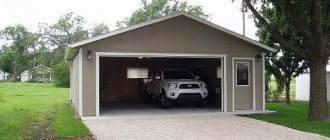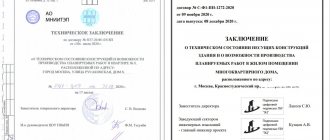February 13, 2020
Adviсe
Knowledge of parking rules and prohibitions will help car owners avoid fines and defend their right to a place in the yard for personal vehicles
Car owners know: unorganized placement of vehicles in the local area often leads to conflicts between neighbors. Let's figure out how to park legally and what you need to remember so that a piece of land in the yard does not become a cause of discord.
Is it possible to leave a car in the yard in 2021?
Yes, you can. As we have already indicated above, today this ban is not in effect. However, the authorities authorized to issue fines for parking in the yard may not know about this or simply abuse your possible ignorance.
The paradox is that in 2021, the supposed ban on parking a car in the local area is being actively discussed. However, it was he who was canceled from March 1, 2021. And before that, the situation was even more absurd: you had the right to park your car in any other person’s yard, but in your own it was prohibited.
So, let's start looking at the chronology of the introduction of these rules.
SanPin prohibition of parking in the local area
More than 10 years ago, the Chief Sanitary Doctor of our country issued a special regulation in order to regulate the situation in the courtyards of residential buildings. This document is called SanPiN 2.1.2.2645-10.
It was in it that legislators indicated a ban on parking cars in courtyards. However, not in all cases.
- Clause 2.3 of the said SanPin regulates an exhaustive list of possible objects on the land plot of the local area, among which “guest parking of vehicles” is provided.
- And, most importantly, clause 2.10 prohibits the organization of any parking lots in the courtyard of a residential building, except for the guest ones mentioned above.
- At the same time, Article 35 (Part 3) of the Town Planning Code of the Russian Federation directly states that parking for vehicles is allowed in courtyards.
Does all this mean that parking cars near the house where we live is prohibited? In fact, the above norms of legislative acts were a long time ago and are not true today. We'll talk more about this below.
The Supreme Court banned parking in the courtyards of residential buildings - is this true?
Meanwhile, this state of affairs has been challenged more than once in Russian courts. One of the most striking and significant judicial acts is the Appeal Ruling of the Supreme Court of the Russian Federation No. APL18-470. It was there that a motorist who was fined for parking in his local area filed a complaint about the contradiction of the above-mentioned SanPin with higher-priority federal laws, including the Town Planning Code.
However, the Supreme Court clarified that there is no contradiction in this case. After all, the code only indicates the obligation to organize parking lots in courtyards. And SanPin clarifies that we are talking about guest parking.
Thus, it was still impossible to park your car in the courtyard of the house if you live in this house - that is, to use the parking lot in the mode of constant preferential use of it. This is the opinion of the high court.
You will also be interested in:
- New fine for stopping and parking on the lawn - true or not?
- Is there a new fine for dirty and unreadable plates now?
- Everything about the fine for a legal entity for stopping on the lawn: how much is it, how to appeal?
So is it possible to park the car today? New law
However, all of the above does not make significant sense in 2021.
The thing is that SanPin 2.1.2.2645-10 has lost its legal force due to the publication of a new document - SanPin 2.1.3684-21. And it was in the latter that the ban on parking cars in the courtyard of any area near residential buildings was lifted. You simply will not find such a ban in the text of the new legal act.
But there is an important nuance!
There must be at least 10 meters from the parking area to the residential building. This is already prescribed by the third SanPin number 2.2.1/2.1.1.1200-03.
Its table 7.1.1 indicates the requirements for the minimum gaps between transport storage areas and to the facilities of the structure. And for the smallest parking lots, a minimum of 10 meters is provided here.
However, these requirements relate specifically to the design of the territory during development and operation, so the likelihood of running into a fine in this case is small.
However, if suddenly a traffic police crew arrives in the yard, then do not forget to take into account section 12 of the traffic rules, which contains much more realistic traffic police fines. Please note the following requirements:
- in any case, it is prohibited to park on the sidewalk, both in the yard and on the road, unless there is a permit sign with a sign,
- also, if there is no permission sign, you can only park the car in one row parallel to the road,
- there must be at least 3 meters between the opposite edge of the roadway and your car; and, if there is a continuous marking, then up to it,
- stopping is permitted no closer than 5 meters before the intersection of roadways,
- It is also prohibited to cover road signs if they are in the yard,
- You must not block the movement and exit of other vehicles.
And now as for the roadway and the road in general in the courtyards. Many car enthusiasts believe that a yard is an area adjacent to the road. Consequently, it is not expensive in itself and does not contain them. This is an incorrect judgment, and it contradicts the opinion of the Supreme Court, which is precisely what the inspectors and lower judges are guided by.
Fine for parking in a green zone
And another important subtlety is parking on the lawn. Please note that in this case, a “lawn” is not always considered to be a layer overgrown naturally or artificially with grass or other plants. There is a more expanded interpretation here, which is contained separately in each legislative act of a constituent entity of Russia - a region or even a city. Most often, so-called “green zones” are marked on maps, and based on them, fines are issued.
The fines themselves also depend on the specific region or even city. On average, they range from 2 to 5-7 thousand rubles for citizens.
How to organize parking in the local area
The organization of parking spaces begins with a meeting of residents and approval of the corresponding decision with the consent of at least 75% of the owners. Further procedure:
- appointment of an initiative group that will deal with the process;
- collection of documents;
- if necessary, contact the HOA. An example would be two houses next to a common yard;
- transfer of documents to local authorities.
Read also: Law on HIV-infected people in the Russian Federation
After the process is completed, you need to wait for a decision. If it is positive, then the parking lot is equipped according to the required criteria.
Attention! There must be a suitable area in the local area. If it is not there, parking will not be approved. For example, instead of a playground, the authorities will not allow parking areas for cars.
Where to get permission
First of all, you will need to contact the district department that deals with land resources and land management. In a municipality this could be a committee or a department. If permission has been received from the department, then you should submit the documents to the traffic police and the architecture committee.
It is worth considering that all appeals have a written form in the form of an application indicating data on the HOA, the applicant and the local area. Additionally, upon first application, a request for the allocation of a plot of land is indicated.
Developing a plan will require the services of a specialist. The project will have a plan for the local area with a designated parking space. Construction begins only when the project is agreed upon with the owners.
Places for disabled people have their own characteristics, in particular, they are marked with a special sign, as well as a platform width of at least 3.5 meters. This requirement must be complied with to ensure that there is no interference for a person with disabilities or reduced maneuverability.
Preparation of necessary documentation
The collection of documents begins with the minutes of the general meeting.
All residents who were present and agree with the decision must sign it. Additionally, consent will need to be obtained from persons who were absent. After this, you need to obtain a certificate about the composition of the local area. It is issued at the inventory department or at the local municipality.
In the future, the bearer will need to have with him personal documents and the data specified in the general application.
According to the law, the placement of vehicles in the courtyard of a residential building must fully comply with traffic rules and sanitary standards. If there are violations, a fine is issued to the owner. Additionally, it is necessary to take into account that for permanent parking of cars, a parking lot is required, which has been registered in accordance with all the rules.
Is it allowed to park a car in a neighbor's or someone else's yard?
Above we have already described a rather absurd situation with the previously valid rules. According to them, you had no right to park your car in your yard. And in strangers - as much as you like.
Thus, a loophole emerged - it was enough to simply agree with the residents of neighboring houses to change places. Local government officials who came to fine negligent motorists would then be able to provide documents stating that you do not live where you parked. And a fine for parking in the yard of a house would be illegal. Of course, few people thought of this method.
But, we repeat, in 2021 you can park your car in the yard of both someone else’s and your own home. This is not prohibited by any regulation. However, there are restrictions and subtleties when you can still get a fine.
What about trucks?
In addition to the listed SanPins and codes, there is also a main document for drivers - Traffic Rules. And they still prohibit trucks with a permissible maximum weight of more than 3.5 tons from being parked in yards. This is prescribed by paragraph 17.2 of the traffic rules.
But pay attention to two important subtleties in this rule:
- we are talking specifically about parking – that is, a stop lasting more than 5 minutes; in addition, parking for more than five minutes is not considered parking if it is associated with loading/unloading cargo or boarding/disembarking passengers,
- If there are markings allowing trucks to be parked in the yard, then the ban ceases to apply.
Preparation of project documentation
You can make a project for the location of the parking lot and its arrangement yourself or order its development from a specialist. The latter option is preferable, because it is easier to obtain permission from the relevant authority.
This documentation must be approved at the general meeting of owners. The decision is made in writing.
At the same time, the person responsible for carrying out the procedure for approving the arrangement of the parking lot should be selected and the estimate for its installation should be approved.
This documentation is subsequently sent to the council of deputies or the council along with the meeting’s decision on the creation of parking spaces.
Is it possible to warm up the engine near houses in 2021?
Yes, if it takes less than the same 5 minutes.
The same clause 17.2 of the Rules applies here, which also specifically prohibits parking with the engine running in any vehicle in residential areas, as well as in courtyard areas.
And again we go to the definition of parking and see that this is parking lasting more than 5 minutes. We mean that if you manage to warm up the engine during this time, then you are not violating anything. If you don’t make it in time, you will be fined under Part 1 of Article 12.19 of the Code of Administrative Offenses of the Russian Federation in the amount of 500 rubles.
Another question is who and how will be able to identify the fact that you have been standing with the engine warming up for more than 5 minutes. Local governments are not authorized to issue such fines. And traffic police officers detect traffic violations in courtyards very rarely.
Please also note that the exception is disembarking/embarking passengers and/or loading or unloading luggage.
How can residents deal with car offenders?
To bring to justice a violator who ignores parking rules and established prohibitions, it is recommended:
- record the violation in a photo or video;
- report it to authorized persons of state authorities: the Department of State and Housing Supervision, the police - the local police officer or the traffic police; Evidence should be provided whenever possible.
Not only residents of an apartment building, but also employees of the management company (HOA) can report a violation.
Is it allowed to wash a car in yards?
No. It is forbidden. And it was always like this, unlike parking. In this case, the ban on car washing directly stems from clause 135 of SanPiN 2.1.3684-21.
However, this document does not contain an expanded interpretation of the word “washing”, therefore, the one who has the right to draw up a protocol on the relevant violation is authorized to determine the criteria for this process. This is where controversial situations arise. Of course, you are unlikely to get a fine if you simply wipe the car with a rag. But questions arise regarding dry washing, if you do not drain the water and so on.
Can I repair, fill and drain gasoline?
In the same paragraph 135 of SanPin there are separate requirements not for repairs in general, but for individual procedures. So, for 2021 in the courtyards of houses:
- it is impossible to regulate the operation of the engine,
- brake system,
- car horn.
In addition, the same clause expressly prohibits draining oil and any fuel, including diesel and gasoline. But nothing is said about refueling - which means it is not prohibited.
Parking rules
Special parking rules have been developed, Traffic Regulations, clause 26.2 “On parking in a residential area,” which stipulates that parking a car is allowed strictly in the designated place.
There are several options here. You can leave your car in a paid parking lot next to the house or in the yard in specially designated areas. However, in practice there are always not enough of them or they are completely absent.
If there is no paid parking or free spaces in the yard near the house, you should contact the traffic police to clarify the situation. In any case, employees must take action, even if not immediately.
What other prohibitions for courtyard areas according to traffic rules?
Please note a number of requirements of the Rules for residential courtyards:
- you are obliged to give way to pedestrians even within the roadway in the yard (clause 17.1 of the traffic rules), and pedestrians have the right to walk along it,
- when leaving the yard, you must also give way to pedestrians and cars, as when leaving the adjacent territory,
- In addition, the Rules prohibit through traffic and instructional driving in residential areas.
Another important requirement is clause 19.3 of the traffic rules, which obliges the driver to turn on the side lights when parking in any unlit place. Alas, if the courtyard area is not illuminated, then formally you must fulfill this requirement, otherwise a fine under Article 12.20 of the Code of Administrative Offenses of the Russian Federation in the amount of 500 rubles. The fact that you parked the car overnight, and during this time the dimensions will drain the battery in your car, does not bother anyone.
Something else useful for you:
- A garbage truck in the yard cannot reach the garbage cans - is there a fine and evacuation?
- Changes in fines and new traffic rules from November 1 and 20, 2021 - where is the truth?
- Has the Supreme Court's ruling on imprisonment for dirty license plates entered into force?
What are the fines?
Now let's look at all possible penalties for traffic violations in the courtyards.
Table of fines for violations in yards
| Violation | Fine |
| Washing a car in the yard, draining oil or fuel, repairing the engine, brakes or horn | 500 – 1,000 rubles under Article 6.4 of the Code of Administrative Offenses of the Russian Federation and separate fines for legal entities and officials |
| General violations of parking rules in yards | 500 rubles or a warning under Part 1 of Article 12.19, and, if the violation was committed in Moscow or St. Petersburg, then 2,500 rubles |
| If you left your car in a disabled area | 5,000 rubles for part 2 12.19 |
| Second row stop | 1,500 rubles according to 12.19, part 3.2; 3,000 rubles for Moscow and St. Petersburg |
| If you created obstacles for the movement of other cars by parking | 2,000 rubles by 12.19, part 4; fine 3,000 rubles for violations in St. Petersburg or Moscow |
| Parking on the lawn | The fine is provided by the subject of the Russian Federation - as a rule, from 2 to 5-7 thousand rubles |
Where to complain about illegal parking at the entrance?
This depends on the type of offense. If it falls under the articles of traffic rules, then the responsibility for registration lies with the traffic police officers, to whom the application (message) must be sent. In other cases, these may be representatives of other departments of the Ministry of Internal Affairs, regional authorities, and municipalities.
Some entities use comprehensive approaches to filing a complaint. For example, Moscow offers special applications and other online methods for reporting parking violations.






